CONSULTATION ON THE ALLOCATION OF SCOTTISH FISH QUOTAS
Outline of current quota allocation history and process. Possible changes to the Scottish allocation system.
Annex C
Overview of recent economic performance of Scottish fishing fleets
Over 10 metre fleet
The over 10 metre Scottish fleet targeting quota stocks is very diverse and has had varying experience over the recent past with some segments notably more successful than others in terms of financial performance, although all segments except Pelagic have experienced declining vessel numbers.
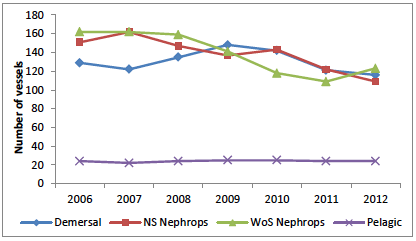
Figure 1: Vessel numbers in key segments of the Scottish fleet Source: Seafish
A brief description of aggregated fleet segments is provided below based on the standard vessel segmentation developed by Seafish.
Demersal Sector
In 2012 there were 116 demersal vessels fishing predominantly whitefish species, down from around 130 vessels in 2006. Vessels were on average 21m in length, 19 years old and operated for 165 days a year.
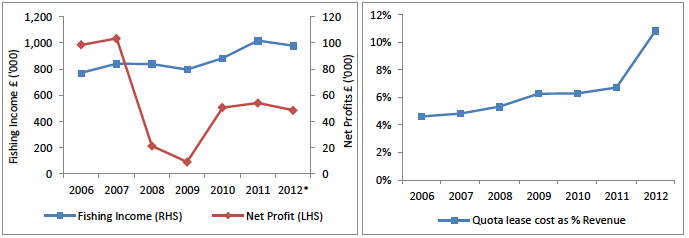
Figure 2: Mean income, profit and quota leasing costs as % of revenue from all vessels in the five key demersal sectors (<24m <300kw; <24m >300kw; seiner; pair trawl; and >24m). Source: Seafish annual fleet survey, *net profit value for this year was estimated by Marine Scotland from Seafish data.
Average fishing income per demersal vessel from the period 2006-2012 was £876,129 with operating profits of £119,330 and net profits of £55,159. Fishing income has increased throughout the period (Fig. 1) however net profits decreased significantly from 2007-2009 and then recovered somewhat between 2010-2012. This performance does not appear to be directly related to quota leasing costs which has been increasing steadily between 2006-2011 with a sharp increase from 7% to 11% of vessel revenue between 2011-2012. The increase in 2012 has resulted in quota costs doubling to £109,494 from an average of £50,944 per year between 2006-2011 per vessel.
North Sea Nephrops Sector
In 2012 there were 109 North Sea Nephrops vessels (mobile gear), down from around 150 vessels in 2006. Vessels were on average 20m in length, 21 years old and operated for 175 days a year.
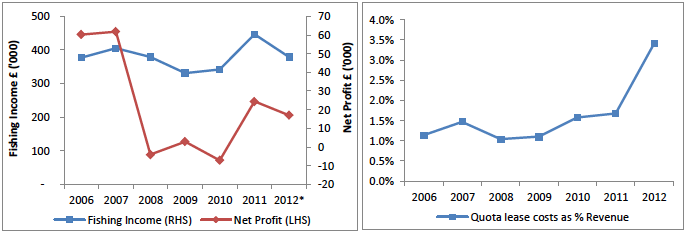
Figure 4: Mean income, profit and quota leasing costs as % of revenue per vessel from North Sea nephrop vessels. Source: Seafish annual fleet survey, *net profit value for this year was estimated by Marine Scotland from Seafish data.
Average fishing income per vessel from the period 2006-2012 was £380,046 with an operating profit of £53,745 and a net profit of £22,165. Fishing income decreased between 2007 and 2010, then increased in 2011 to return to 2008 values in 2012 (Fig. 2). This is mirrored in net profits with the exception of 2009 where net profits were higher than surrounding years. Quota leasing costs have remained between 1-1.5% of vessel revenue from 2006-2011 but increased substantially in 2012 to almost 3.5% of vessel revenue. This has resulted in quota costs going up to £13,810 from an average of £5,337 between 2006-2011 per vessel.
West of Scotland Nephrops Sector
In 2012 there were 123 West of Scotland nephrops vessels (mobile gear), down from around 160 vessels in 2006. Vessels were on average 15m in length, 32 years old and operated for 165 days a year.
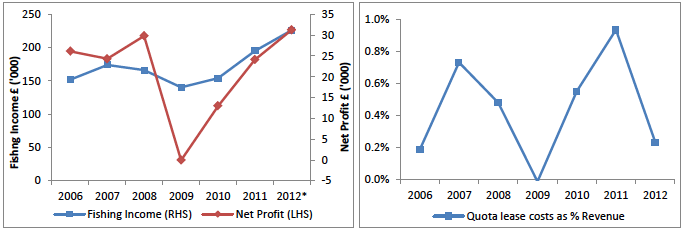
Figure 5: Mean income, profit and quota leasing costs as % of revenue from all West of Scotland nephrop vessels. Source: Seafish annual fleet survey, *net profit value for this year was estimated by Marine Scotland from Seafish data.
Mean fishing income per vessel from the period 2006-2012 was £172,737 with an operating profit of £32,225 and a net profit of £21,259. Fishing income remained between £150,000 and £175,000 between 2007 and 2010, then increased in 2012 with average income over £200,000 (Fig. 3). Net profits are difficult to interpret because of the significant drop in 2009 which then returned to profit from 2010 onwards. Leasing costs in 2009 dropped to 0% indicating the majority of WoS vessel did not lease any quota that year, yet profits were still poor. Quota leasing cost fluctuate between 0.2% and 0.9% of revenue equating to £292 up to £1,857 per vessel for other years over this period.
Pelagic Sector
In 2012 there were 24 Pelagic trawlers in the Scottish fleet. This figure has been largely static since 2006. Vessels were on average 66m in length, 11 years old and operated for 37 days a year.
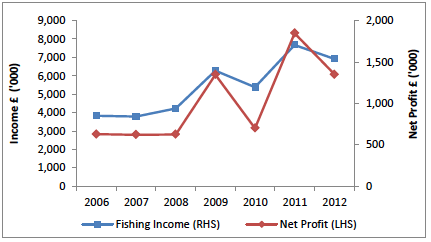
Figure 6: Mean income and profit per vessel for Pelagic vessels. Source: STECF.
Mean fishing income per vessel from the period 2006-2012 was £5,444,249 with a net profit of £1,016,890. Fishing income has increase year on year with drop in 2010 and 2012. This is mirrored in net profits have also increase in line with income with the exception of 2010 when profits dropped back to 2006-2008 values.
10 metres and under (10mu) fleet
In 2013, there were 1,100 active vessels in the 10 metres and under (10mu) category. They landed a total of 11,000 tonnes of fish and shellfish with a total value of £33m. Over one third (35 per cent) by value was from quota stocks, landed by just over 600 vessels ( i.e. around 500 10mu vessels fished exclusively on non-quota stocks). The vast majority of the quota-stock landings were of Nephrops.
Around 400 vessels are classified as 'low activity' (value of landings less than £10,000) and these are not considered in the summaries provided below.
Mobile gears
In 2012 there were 60 10mu vessels using mobile gears (<10m demersal trawl and seines) in the Scottish fleet (excluding vessels classified as 'low activity') largely targeting Nephrops. These vessels were on average 9.3m in length, 23 years old and operated for 123 days in 2012.
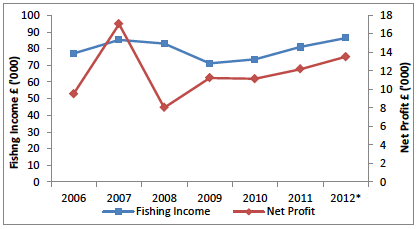
Figure 7: Mean income and profit per vessel for non-sector mobile vessels. Source: Seafish annual fleet survey, *net profit value for this year was estimated by Marine Scotland from Seafish data.
Mean fishing income per vessel from the period 2006-2012 was £79,644 with a net profit of £11,817. Fishing income dropped from 2007 to 2009, but has increased year on year to the value of £86,473 in 2012, the highest in recent years. After a peak in 2007, net profits saw a significant decline in 2008 to return at a steady rate to £13,509 in 2012.
Static gear fleet
In 2012 there were 672 10mu vessels using static gear (pots and traps) in the Scottish fleet (excluding vessels classified as 'low activity'). These vessels were on average 8m in length, 21 years old and operated for 127 day in 2012. They target a mixture of quota species ( Nephrops) and non-quota species.
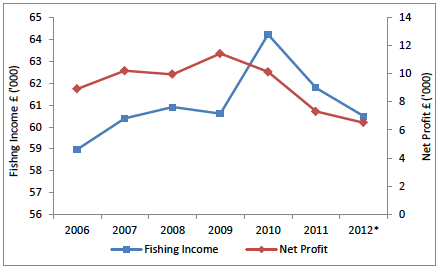
Figure 8: Mean income and profit per vessel for non-sector static vessels. Source: Seafish annual fleet survey, *net profit value for this year was estimated by Marine Scotland from Seafish data.
Mean fishing income per vessel from the period 2006-2012 was £61,050 with a mean net profit of £9,208. Fishing income has increased year on year with a large jump in 2010 followed by a substantial drop in 2011 and 2012. This is mirrored in net profits with the exception of 2010 where net profits started their decline whilst fishing income was at its peak.
Contact
There is a problem
Thanks for your feedback